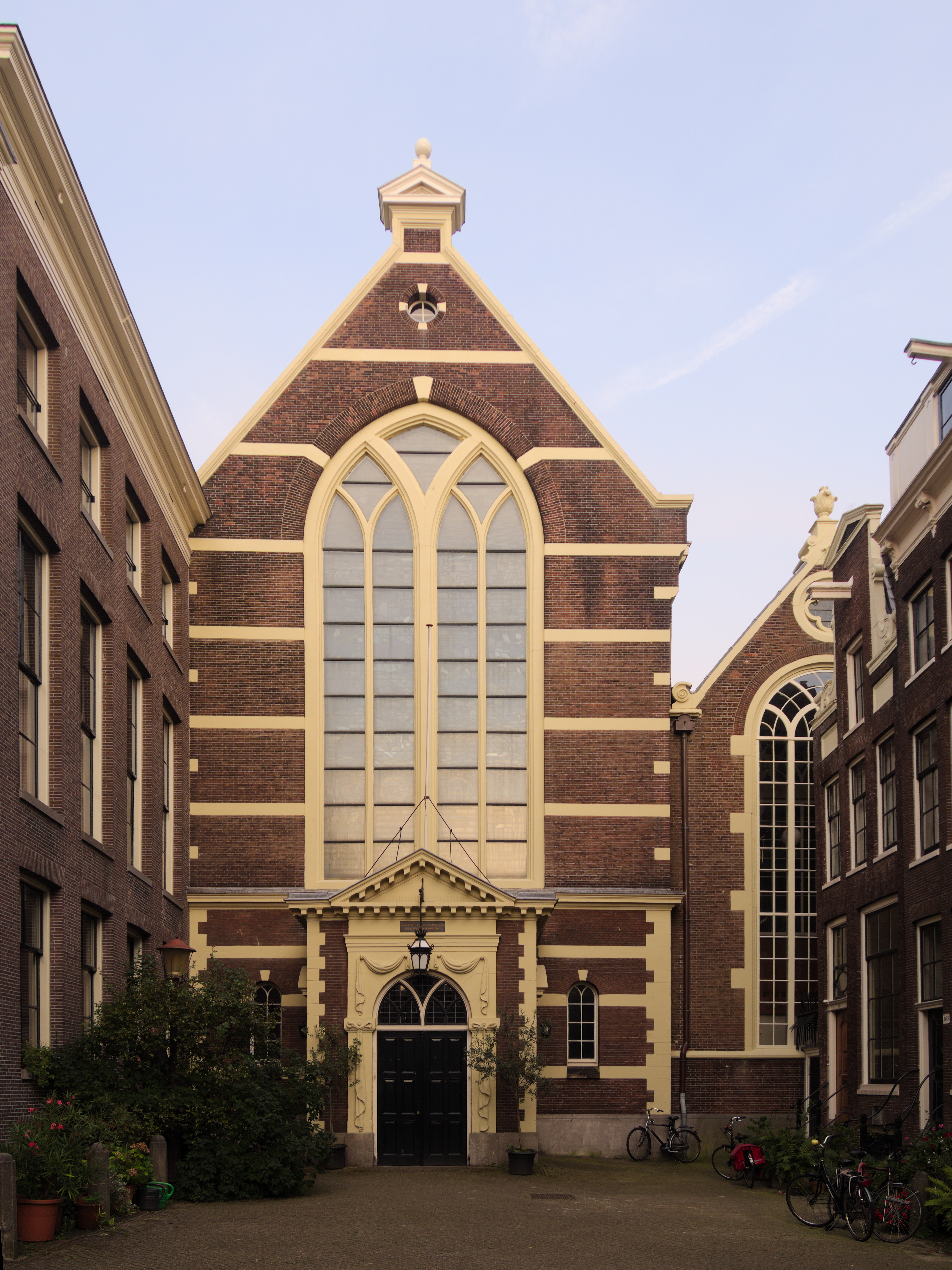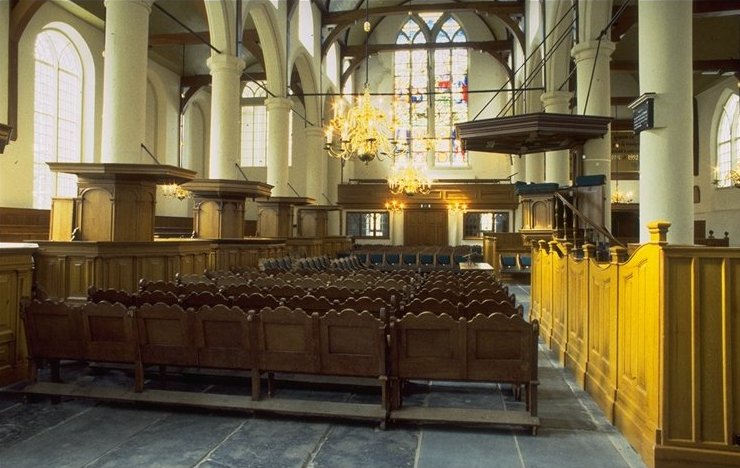Walloon Church in Amsterdam on:
[Wikipedia]
[Google]
[Amazon]




 The Walloon Church ( Dutch: ''Waalse Kerk'';
The Walloon Church ( Dutch: ''Waalse Kerk''; "Monumentnummer: 50 - Oude Walenkerk, Walenpleintje 159 1012 JZ te Amsterdam", Monumentenregister, Rijksdienst voor het Cultureel Erfgoed
(Dutch)
Waalse Kerk Amsterdam
(Dutch)
(Dutch, archived)
(Dutch, archived)
Website of the Walloon Church of Amsterdam
(Dutch) {{Authority control Protestant churches converted from Roman Catholicism Rijksmonuments in Amsterdam Churches in Amsterdam Reformed church buildings in the Netherlands Churches completed in the 1400s




 The Walloon Church ( Dutch: ''Waalse Kerk'';
The Walloon Church ( Dutch: ''Waalse Kerk''; French
French (french: français(e), link=no) may refer to:
* Something of, from, or related to France
** French language, which originated in France, and its various dialects and accents
** French people, a nation and ethnic group identified with Franc ...
: ''Église Wallonne'') is a Protestant church building in Amsterdam, along the southern stretch of the Oudezijds Achterburgwal
The Oudezijds Achterburgwal, often abbreviated to ''OZ Achterburgwal'', is a street and canal in De Wallen, the red light district in the center of Amsterdam.
Location and characteristics
Just like the Oudezijds Voorburgwal, the OZ Achterburgwa ...
canal. The building dates to the late 15th century and has been in use as a Walloon church since 1586. The church was also known as the ''Franse Kerk'' ("French Church"), ''Walenkerk'' ("Walloons' Church"), ''Oude Walenkerk'' ("Old Walloons' Church"), or ''Oude Waalse Kerk'' ("Old Walloon Church").
The painter Bartholomeus van der Helst (1613-1670) and the scientist Jan Swammerdam
Jan Swammerdam (February 12, 1637 – February 17, 1680) was a Dutch biologist and microscopist. His work on insects demonstrated that the various phases during the life of an insect—egg, larva, pupa, and adult—are different forms of the ...
(1637-1680) are interred in the church. Elizabeth Timothy
Elizabeth Timothy or Elisabet Timothee ( 1700 – April 1757) was a colonial American printer and newspaper publisher in the colony of South Carolina. Timothy was a French Huguenot Dutch immigrant that came to colonial America with her family ...
(1702-1757), the first female American newspaper editor and publisher, was most likely christened there. The painter Vincent van Gogh visited the church regularly in the 1870s to attend sermons delivered by his uncle Johannes Paulus Stricker.
Every Sunday at 11 a.m. church services are held here in French. The church is also used for concerts and music recordings. It is known for its excellent acoustics
Acoustics is a branch of physics that deals with the study of mechanical waves in gases, liquids, and solids including topics such as vibration, sound, ultrasound and infrasound. A scientist who works in the field of acoustics is an acoustician ...
.
The building has held ''rijksmonument
A rijksmonument (, ) is a national heritage site of the Netherlands, listed by the agency Rijksdienst voor het Cultureel Erfgoed (RCE) acting for the Dutch Ministry of Education, Culture and Science.
At the end of February 2015, the Netherlands ...
'' status since 1970.(Dutch)
History
The Walloon Church was originally the chapel of a Roman Catholic monastery, the ''Sint-Paulusbroederklooster''. The monastery's first chapel was built in 1409 but most likely destroyed during the fire of 1452. In 1493, the monastery received permission to build a new chapel, which was taken into use three years later. Following the 1578 ''Alteratie
The Alteratie (Eng: Alteration) is the name given to the change of power in Amsterdam on May 26, 1578, when the Catholic city government was deposed in favor of a Protestant one. The coup should be seen in the context of the greater Dutch Revolt th ...
'' (the Protestant Reformation in Amsterdam), the chapel was confiscated by the city government. It was used as a storeroom and for various other purposes until 1586, when it was offered to the Walloon Reformed community of religious refugees, French-speaking Protestants who had fled religious persecution in the Southern Netherlands and France. It was one of a large number of Walloon churches established in the Dutch Republic during this period — at least fifteen in the period 1571-1590 alone.
In 1616, a new entrance was added on the north side of the church, with a gate designed by city architect Hendrick de Keyser. The gate, which gave access to ''Oude Hoogstraat'' street, was decorated with skulls, a nod to the funeral processions which passed through this gate. The front gate of the church, in Classical style, dates to 1647.
The church, consisting of a central nave and a northern semitransept
A transept (with two semitransepts) is a transverse part of any building, which lies across the main body of the building. In cruciform churches, a transept is an area set crosswise to the nave in a cruciform ("cross-shaped") building withi ...
, was extended in 1661 with a southern semitransept. The revocation of the Edict of Nantes in 1685 led to another wave of Protestant refugees from France, greatly swelling the Walloon community in Amsterdam. In order to accommodate the larger community, the church was extended with galleries on three sides. The church nevertheless proved too small, so a second church was opened in a disused bell foundry on ''Prinsengracht'' canal in 1716. The Walloon church was subsequently known as the ''Oude Waalse Kerk'' ("Old Walloon Church") or ''Grande Église'' ("Great Church") to distinguish it from the second church, known as the '' Nieuwe Waalse Kerk'' ("New Walloon Church") of ''Petite Église'' ("Lesser Church").
The church underwent further renovations in 1816 and 1891, among others, during which the galleries were again removed. In 1990-1992, the church was restored, whereby the foundations were restored to stop the church from sinking, caused by the front facade installed in 1885. During this restoration, so many tombstones were found that a decision was made to replace the concrete floor with a new, self-supporting floor with its own foundation. The balcony was also restored.
The small square in front of the church, known colloquially as the ''Walenpleintje'' ("Little Walloon Square"), was officially given this name in 1976. The address of the church is Walenpleintje 159, as the street numbering still follows that of the Oudezijds Achterburgwal canal.
A plaque in the northern semitransept of the church carries the French inscription ''Fondée en 1409; Restaurée en 1647; Agrandie en 1661; Rebâtie en 1816; Restaurée en 1891 par le troupeau Wallon et par ceux qui s'intéressent à son culte; Restaurée, ameliorée et renovée en 1991 et 1992''.
Gunshots in the church
On 12 October 1755, a French baker's assistant entered the church during services and fired several rifle shots at the vicar. The baker's servant had fallen in love with the daughter of a rich merchant, far above hisstation
Station may refer to:
Agriculture
* Station (Australian agriculture), a large Australian landholding used for livestock production
* Station (New Zealand agriculture), a large New Zealand farm used for grazing by sheep and cattle
** Cattle statio ...
, and the girl's father had requested that the vicar put an end to the love affair, which had infuriated the baker's servant.
The vicar was only grazed by a bullet, but was so startled that he fell backwards. The door of the pulpit had not been properly shut, causing the vicar to fall down the stairs leading up to the pulpit. The fall left him with a severe head injury, but he survived and recovered from his injuries. The baker's assistant tried to flee the scene, but was arrested and locked away in the '' Rasphuis'' prison for a number of years.
The incident left a number of bullet holes in the pulpit and the adjacent pillar. These were however hidden during the 1990 restoration.
Organ
The church received its firstpipe organ
The pipe organ is a musical instrument that produces sound by driving pressurized air (called ''wind'') through the organ pipes selected from a keyboard. Because each pipe produces a single pitch, the pipes are provided in sets called ''ranks ...
in 1680, built by the Ghent organ builder Nicolaas Langlez. This organ however proved unsatisfactory and was frequently altered until Christian Müller was commissioned in 1733 to build an entirely new organ, which was taken into use the next year. This organ is still in use and is considered the best-preserved of the Müller organs still in existence. In subsequent years the organ was repeatedly repaired and altered, until the church in 1960 decided to restore the organ to its original state. This restoration by organ builders Ahrend & Brunzema was completed in 1965, followed by a second restoration in 1993 and a third in the year 2000.
Orphanage
The Walloon Church in 1631 purchased three buildings on Laurierstraat in theJordaan
The Jordaan is a neighbourhood of the city of Amsterdam, Netherlands. It is part of the borough of Amsterdam-Centrum. The area is bordered by the Singelgracht canal and the neighbourhood of Frederik Hendrikbuurt to the west; the Prinsengracht to ...
district of Amsterdam and opened an orphanage there. Not only orphans but also widows and elderly were housed there. In 1683 the orphanage was moved to a building on Vijzelgracht
The Vijzelgracht is a street and former canal in Amsterdam.
The Vijzelgracht is adjacent to the Grachtengordel (canal belt) and is an extension of one of the most important city radii for public transport and normal traffic.
This through route ...
canal, which remained in use as an orphanage until 1967. The building now houses French cultural center Institut français des Pays-Bas.
Sources
* Amsterdam Bureau Monumenten en ArcheologieWaalse Kerk Amsterdam
(Dutch)
(Dutch, archived)
(Dutch, archived)
See also
* Walloon churchReferences
External links
Website of the Walloon Church of Amsterdam
(Dutch) {{Authority control Protestant churches converted from Roman Catholicism Rijksmonuments in Amsterdam Churches in Amsterdam Reformed church buildings in the Netherlands Churches completed in the 1400s